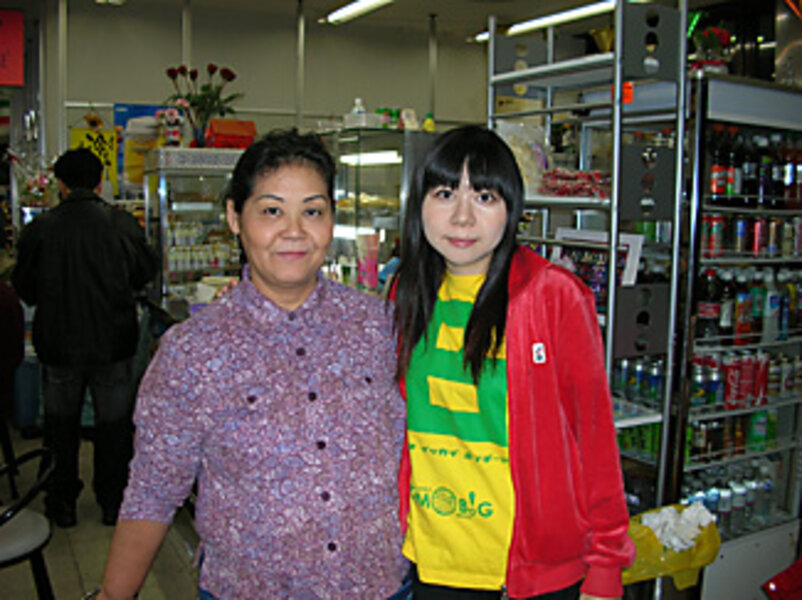Japanese youth help compatriots embrace diversity
Loading...
| Oizumi, Japan
Miharu Tanaka hands out fliers in Tokyo advertising Brazilian eateries in Oizumi, a city two hours away by train. The young woman makes the commute to encourage people to visit the country's most diverse city, with its 16 percent non-Japanese population.
Her efforts are part of a generational shift toward becoming more receptive to a multicultural Japan. But in a country that has long prided itself on homogeneity and is seeing a rise in Japanese-centric nationalism, it will take some persuading for most people to embrace the growing reality of a more diverse population.
Japan has long been wary of – even hostile to – foreigners in its midst. Some say the media perpetuate a stereotyped image of foreigners as criminals.
Japan's bias against foreigners shows in its immigration laws. It is virtually impossible for immigrants to find work here and become citizens. Most foreigners are reduced to low-level "3K" jobs – kitanai, kiken, and kitsui, or "dirty, dangerous and hard" – that most Japanese were no longer willing to take. The country wants to maintain its "racial homogeneity," critics say. Officials recently began considering ways to tie long-term residency permits and work visas to Japanese language ability.
Certainly, the self-image of a homogeneous society remains strong. But some say that perception is incorrect. The official count of registered foreign residents is 2 percent of the nation's total population of 128 million; but that represents an increase of 47 percent in the past 10 years and excludes many non-Japanese residents. While Japan has witnessed more international marriages – 21,000 children are born to these couples every year – its census figures do not show ethnicity.
Moreover, the number of registered foreigners does not include naturalized citizens, indigenous people, or those who overstay their visas, argues Debito Arudou, a US-born social activist who became a naturalized Japanese citizen in 2000.
Brazilian Japanese are thought to number around 300,000. The descendants of Japanese who immigrated to Brazil in the early-1900s, they returned to the land of their ancestors in recent decades. But since immigration reforms in 1990 granted only the descendants of Japanese the right to live and work in Japan, Japanese Brazilians mostly serve in 3K jobs in Oizumi and similar drab, industrial towns.
These areas have become non-Japanese enclaves – as well as microcosms of the racial tensions that have arisen with diversity. In Oizumi, where most non-Japanese residents are Brazilian, more Brazilian flags hang from buildings than Japanese ones. Brazilian restaurants, grocery stores, and video-rental shops dwarf Japanese sushi bars and noodle shops.
Japanese Brazilians in Oizumi complain about being called gaijin, or "outsiders," and treated as such. When they run into Japanese colleagues, some Brazilians complain, the Japanese pretend not to recognize them. A majority of foreigners who live in neighborhoods alongside Japanese would like to interact with them, a 2007 opinion poll found. But only 10 percent of Japanese in these areas felt the same.
But a growing number of Japanese – mostly youths, such as Tanaka – are trying to persuade compatriots to embrace ethnic minorities. Unlike in previous generations, young adults tend to be more welcoming of diversity. Some analysts argue that, in a country with a dwindling birthrate – 1.32 as of 2006, down from 1.66 two decades ago – and a rapidly aging population, Japan should roll out the red carpet for foreigners.
In Oizumi, young Japanese are teaming up with Brazilians, cracking barriers among communities. Tanaka formed a group named Kimobig ("daring") to energize exchanges such as language classes between Japanese and Brazilians.
Not everyone is pleased with the group's efforts. Tanaka receives prank calls and harassing e-mails from Japanese and Brazilians. Still, she says, more locals have gotten acquainted with Brazilian residents. Urbanites have been entranced by Brazilian music, dance, and food. "So great is what one person can do," she says. "One person can help change his or her parents' views and their friends.' "





